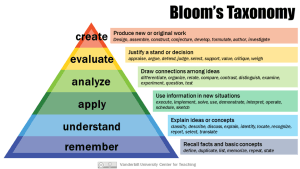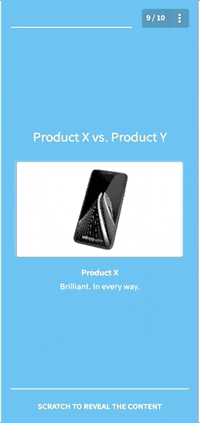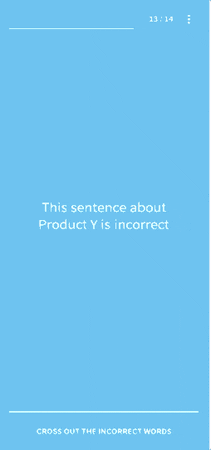Designing Realistic Training Objectives For Employee Training

What are training objectives?
While often overlooked, planning and setting training objectives for learning activities are among the most significant parts of the training and course development cycle. Training objectives are statements of what the learner(s) should be able to do after completing the teaching and practice sessions. Not a one-size-fits-all, they differ between industries and organizations. They are primarily concerned with outcomes such as newly acquired or enhanced knowledge and skills, or an earned credential, all of which are directly related to the advancement of their career path.
As a rule of thumb, they should be written before the lessons or instruction is designed. Otherwise, the entire competency training will fall all over the place. This is because training objectives align everyone in the team to a clear path leading to a single goal. With clear objectives set in place, trainers can hone more focused lessons and course design containing only the most needed information. As for the employees’ side, analyzing and knowing exactly the information and skillset they should be gaining will improve their learning experience. It’s a great motivation for them to attend and complete the training and increase their knowledge retention.
Setting your training objectives doesn’t need to be intimidating. Below, we’ll walk you through a step-by-step learning process for developing specific and measurable training objectives for your employees.

One model for Training Objectives
We can use the SMART template to define learning objectives. SMART objectives are: Specific, Measurable, Attainable, Relevant and Time-bound.
Specific
The learning objectives, lesson plan objectives, or effective training objectives are focused, not general. The corporate training speaks to precise points.
Measurable
Objective (not subjective) measurements can assess how much learners have accomplished. Measurable objectives show proof of learning.
Attainable
The objectives of corporate learning are based on reality, not just put down to look good on paper. Learning, lesson plan, and training objectives that are unrealistic are doomed to fail from the start.
Relevant
These objectives relate to your learners in obvious and logical ways. Your learners directly benefit from accomplishing them.
Time-bound
There is a finite, but reasonable, time frame in which to do the teaching, practice, and measuring.
Design better Training Objectives for your learners with EdApp Authoring Tool
No credit card required.
Another model for Training Objectives
Learning, lesson plan, smart goal-setting, and training objectives can also be crafted by your instructional designer using the ABCD template: Audience, Behavior, Condition, Degree.
Audience
Who are these objectives or learning goals for? Who will be doing the learning?
Behavior
What are the observable outcome, realistic, measurable, and achievable goals (SMART goals) of the training program? What should the audience be able to do? Is there anything you need to revise?
Condition
Under which conditions or constraints should learners be able to demonstrate their learning and how can you hold them accountable? Consider factors such as location, time, learning materials or courseware, aids, etc.
Degree
How should this learning demonstration be performed? In other words, under which criteria is the performance acceptable? Think about accuracy, speed, quality, completion rates, set goals, etc.
ABCD goal writing is an efficient way to simplify your training development plan.
Since there is quite a bit of overlap between the two models, I like combining the two when writing my objectives. Which brings us to….
How do you write training objectives?
As educators, a key way to accomplish successful adult learning outcomes is to write good objectives. So, how do you write a good objective?
Obviously, you begin with one (or both) training models above. Then, you add Bloom’s Taxonomy.
Developed in 1956 by Benjamin Bloom and collaborators, this framework gives educators a way to pinpoint their objectives. Basically, this hierarchy is bottom up. That is, the skills and abilities at lower levels are needed to accomplish the skills and abilities at the upper ones.

For me, the important thing about Bloom’s taxonomy and entire pedagogy is that it is rich in verbs. Bloom’s Taxonomy makes it easy for me to describe my objectives precisely, not just “learn” or “know”—both unspecific and unmeasurable.
Read more about Bloom’s Taxonomy here.
OK, so how do you write a good objective? Let’s look at some examples.
One of the instructional strategies to writing good objectives is organizing them. Here’s what I mean…
There are many categories of training objectives examples: behavioural objectives, mobile learning and micro-learning objectives, lesson objectives, instructional objectives, etc. The reason for all these categories is that we are moving through levels of teaching and practice to achieve an overall goal.
Let’s work through a concrete example.
Our overall goal
After 10 hours of internal training, the number of English, customer service phrases our non-native, English-speaking employees can produce while on the phone will increase by 50%.
We can consider this goal a behavioural training objective example since it is describing an action which we want our employees to do. Notice that this goal (or overall learning objective)…
- pinpoints who the learning is for
- states a specific area of knowledge: English customer service phrases
- has a finite time frame
- is measurable: we can have pre- and post-conversations with the employees and count the number of target customer service phrases used correctly
- describes how the students should demonstrate their learning: orally while on the phone
Course & Lesson Objectives
Here is a lesson objectives example connected to our goal: When given a picture of a customer service situation, learners will be able to orally roleplay a short, relevant conversation about it (3 questions and answers).
Now, we need to figure out what are the learning objectives and design process for the students which will enable them to accomplish this lesson objective.
Learning objectives examples for students
Taking another look at our lesson objective example, we see that it is at the “Apply” level of Bloom’s Taxonomy. That is, we want our learners to take their knowledge from the two lower levels and use it in this new situation. So, this means we need to create some tasks at those two lower levels. Following are some student learning examples for elearning development.
Training Objective #1: Acquire needed vocabulary
Student learning objective example: Learners will memorize the target customer service phrases.
“How to” suggestion: The EdApp Reveal authoring template displays text-only flip cards that can be rotated one at a time. One side can be a target customer service phrase in English. The other can be the translation into the learner’s native language. If you have several groups of non-native English employees, you can easily create several groups of Reveal flip cards.
Learners can memorize these phrases through self-practice and repetition, at a pace that is right for them, for the amount of time they need. Students can self-test also: easier—look at the English and translate into their native language, check by flipping the card; more difficult—look at the native language and produce the correct English.

Training Objective #2: Reinforce correct construction
Student learning objective example: Given all the words needed, students will construct the customer phrase correctly.
“How to” suggestion: When producing non-native language, native grammar sometimes gets in the way. To decrease “awkward” English, use the EdApp Sentence Construction authoring option. Through this learning solution, learners receive all the words needed for the customer service phrase and must organize them in the correct sequence.
Training Objective #3: Reinforce Accuracy
Student learning objective: When looking at a customer service phrase, students will be able to correctly strike out incorrect words.
“How to” suggestion: Under the pressure of speaking, employees sometimes fall back on familiar, non-native English translations. This task will help reduce such fallback and will teach them how to set goals for themselves in terms of what they want to achieve.
Create slightly incorrect customer service phrases using the EdApp Strike Out gamification template. Using this elearning software template, the students will be presented with the phrases and will need to “strike out” the incorrect word(s).

By constructing excellent learning objectives and pairing them with interactive, motivating practice, you are well on your way to achieving your educational goals.
The start of your educational success is only a click away. Sign up for free and start using the learning management system.
Sources
https://cft.vanderbilt.edu/guides-sub-pages/blooms-taxonomy/
https://lib.guides.umd.edu/c.php?g=598357&p=4144007
https://www.niu.edu/citl/resources/guides/instructional-guide/writing-goals-and-objectives.shtml
Author
